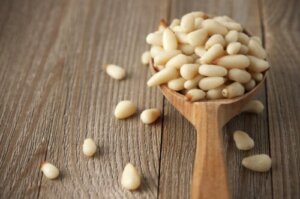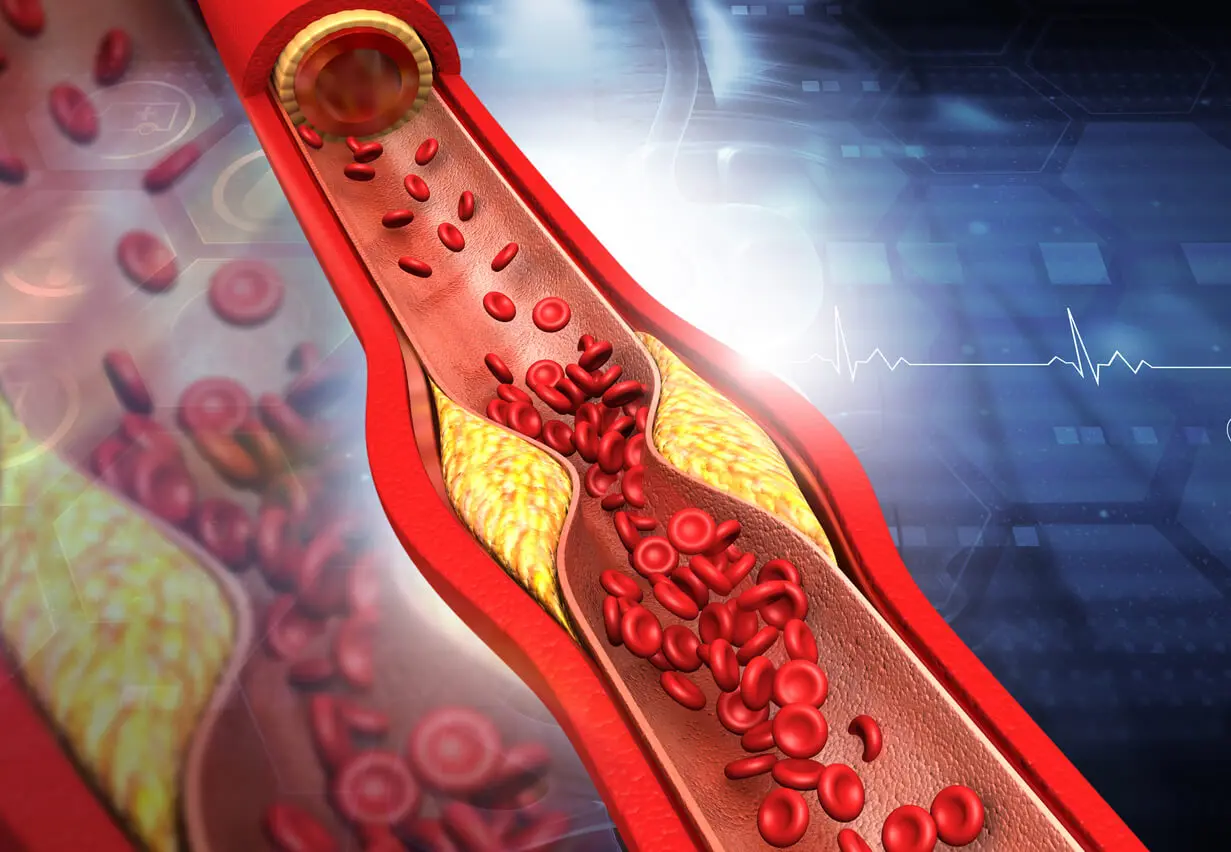Pine Nuts: Nutritional Value, Benefits and How to Eat Them


Written and verified by the nutritionist Maria Patricia Pinero Corredor
You’ve probably heard of pine nuts or eaten them at some point, but you probably don’t know where they come from and the health benefits they provide. These delicious nuts are the seeds found in the scales of pine cones produced by the Scots pine tree. They’re also known as piñon, pignoli or pinoli.
Their exquisite flavor and softness allow them to be consumed raw or in sweet and savory preparations. In addition, in the last decade, the recognition of their nutritional value has increased their worldwide demand.
Today it’s considered the most exclusive and expensive nut on the international market.
Later we’ll show all the information related to the nutritional value, benefits and different ways of consuming pine nuts. So join us to find out all about this nut and make it an ingredient that shouldn’t be missing in your diet.
Read more here: Almonds, Walnuts, or Hazelnuts: Which Are Healthier?
What are pine nuts?
The stone pine (Pinus pinea L.) is a conifer native to the coastal areas of the Mediterranean. It’s now also cultivated in Asia, Australia, the Middle East and South America.
The tree can grow up to 15 meters (50 feet) tall. It produces cones that house the seeds or pine nuts. These are considered the most expensive nuts in the world, as their yield is minimal.
To obtain one kilogram (2.2 pounds) of edible pine nut seed, about 40 kilos (88 pounds) of pine cones are required. In addition, it’s very difficult to keep them correctly, and they can tend to go rancid quite easily.
The seeds are small, whitish, and elongated. To harvest them, the pine cones must be left to dry in summer and wait for them to open to extract the pine nuts, from which the shell is then removed for edible use. They have a certain sweetness and aroma similar to almonds or walnuts.
Nutritional value
Pine nuts are considered to be one of the nuts with the highest nutritional value, especially in terms of their content in polyunsaturated fats, vitamins, and minerals.

Calories and macronutrients
Both energy and macronutrients are expressed per 100 grams (4 oz) of edible nuts:
- Calories: 693
- Proteins: 14 grams
- Total fat: 68.6 grams
- Saturated: 4.6 grams
- Monounsaturated (omega-9): 19.9 grams
- Polyunsaturated (omega-3): 41.1 grams
- Carbohydrates: 4 grams
- Fiber: 1.9 grams
As can be seen from this nutritional information, pine nuts are a good source of protein, but mostly in unsaturated fats, such as omega-3s, which account for 60%. This causes a rapid rancidity of this nut, so they should be protected from heat and sunlight.
A spoonful of pine nuts covers 35% of the polyunsaturated fat recommendations. The energetic content is one of the highest among nuts, after macadamia nuts. On the other hand, the amount of fiber represents almost half of all carbohydrates.
Vitamins and minerals
Values are expressed in milligrams per 100 grams (4 oz) of pine nuts:
- Iron: 5.6
- Magnesium: 270
- Zinc: 6.5
- Potassium: 780
- Phosphorus: 650
- Niacin: 6,9
- Vitamin E: 13,7
Pine nuts are also rich in phosphorus, magnesium, zinc, potassium, and iron. Niacin is present in large amounts, and, when roasted, tends to increase even more. Vitamin E is equivalent to 10% of the recommended daily intake.
The benefits of pine nuts
The health value of pine nuts is influenced by their chemical composition, especially by the quality of the fat, vitamins, and minerals.
Source of omega-9 and omega-3 fatty acids
The lipids in pine nuts have very healthy characteristics. A high proportion is omega-9 fatty acid, known as oleic acid, which is also found in olive oil. This fatty acid has been written about and evidenced in terms of the prevention of cardiovascular disorders.
The characteristic fatty acids of pine nuts, pinolenic and sciadonic acids, are omega-3 fatty acids, which are also related to the prevention of heart disease. Other fatty acids present in these nuts are linoleic or omega-6, in balance with omega-3.
They may have antioxidant effects
Another factor contributing to the healthful effects of pine nuts is the presence of bioactive polyphenolic and vitamin compounds. Professors Lutz and Loewe have written about the high concentration of antioxidants, vitamin E, and phenols, which have a healthy impact on human health, including their anti-aging action.
The polyphenols in pine nut flour have a high capacity to use free radicals and prevent the chain reaction of oxidative processes at the cellular level. For this reason, it can be considered a functional food.
They can be satiety inducing
The high levels of fats in pine nuts, as well as proteins, facilitate the satiety power of these nuts when consumed. Gastric emptying slows down and hunger disappears for a long time.
They lower bad cholesterol levels
Professors Lutz and Loewe also point out that pine nuts have an antilipogenic effect, in terms of lowering triglyceride and LDL or bad cholesterol levels. According to these experts, the seed can reduce the absorption of cholesterol from the diet, thanks to the presence of phytosterols such as beta-sitosterol, campesterol, and stigmasterol.
Thus, the consumption of pine nuts improves the lipid profile in the blood. It’s recommended for patients suffering from elevated cholesterol.

They can strengthen the immune system
According to some experts, pine nuts contain nutrients that strengthen the immune system. Therefore, consuming them would be a good option to increase the intake of zinc, magnesium, and iron, favoring the defenses.
How to consume pine nuts
White pine nuts are very tender, with a fine and slightly sweet taste. When they’re fresh, they have a certain taste of resin that diminishes when they’re fried in a frying pan.
Its culinary use stands out as an accompaniment to meat, fish, vegetables, salads, desserts, and sweets. There’s a wide variety of sweet and savory dishes that can be prepared with these delicious nuts. They can also be eaten raw and roasted, as an appetizer.
In gourmet cooking, some savory dishes stand out. The most notable ones are eggplants stuffed with tomatoes and pine nuts, melon and Iberian ham salad with toasted pine nuts, or cod with pine nuts and raisins.
Other popular dishes are turkey a la Catalana, scrambled black pudding with potatoes, and pine nuts and spinach a la Catalana. Among the sweet dishes are the famous pine nut cocas, or the typical panellets of Valencia, Catalonia, or the Balearic Islands.
How many pine nuts can be consumed per day?
In spite of the benefits of pine nut fat, you should be careful about your daily ingestion, as the energetic contribution is very high. Therefore, it’s recommended to ingest only a handful of these nuts per day, which is equivalent to 30 or 40 grams. (between 1 and 1.5 ounces)
With this portion, you’ll get about 200 calories, 4 grams of protein, 12 grams of omega-3 fat and 6 grams of omega-9.
All cited sources were thoroughly reviewed by our team to ensure their quality, reliability, currency, and validity. The bibliography of this article was considered reliable and of academic or scientific accuracy.
- Piñón. Pine nut. Disponible en: https://www.mapa.gob.es/es/ministerio/servicios/informacion/pi%C3%B1on_tcm30-102872.pdf
- Manuel Bueno Sánchez. Aceite de oliva y salud. CAN PEDIATR Volumen 35, Nº1. Disponible en: https://dialnet.unirioja.es/descarga/articulo/3719410.pdf
- Lutz, Mariane & Loewe M., Veronica. (2014). Piñón de pino: exquisito, saludable y de gran futuro. Indualimentos. 16. 86-88. Disponible en: https://www.researchgate.net/publication/275771102_Pinon_de_pino_exquisito_saludable_y_de_gran_futuro/citation/download
- Bergesse, Antonella Estefanía; Figueroa Gisela, Yanet; Parra, María Laura; Sontag, Leandro Omer; Nepote, Valeria; Ryan, Liliana Cecilia. Harina de piñón (Araucaria araucana (Mol.) K. Koch).Obtención y evaluación de la calidad nutricional y sensorial. Nutr Clín Diet Hosp. 2020; 40(3):36-44. Disponible en: https://revista.nutricion.org/index.php/ncdh/article/view/55/33
- Loewe M., Veronica. (2010). La producción de piñones de pino, una alternativa atractiva y factible para la Patagonia. Disponible en: https://www.researchgate.net/publication/263090931_La_produccion_de_pinones_de_pino_una_alternativa_atractiva_y_factible_para_la_Patagonia
- Montse Vilaplana i Batalla. Nutrición y sistema inmunitario. 2015. Vol. 29. Núm. 6. páginas 22-25. Disponible en: https://www.elsevier.es/es-revista-farmacia-profesional-3-articulo-nutricion-sistema-inmunitario-X0213932415442091
This text is provided for informational purposes only and does not replace consultation with a professional. If in doubt, consult your specialist.








